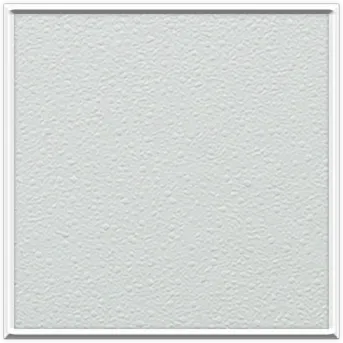Nov . 27, 2024 06:54 Back to list
Understanding the Properties and Uses of Mineral Fiber Board in Construction
Understanding Mineral Fiber Board A Comprehensive Overview
Mineral fiber board is a versatile construction material widely recognized for its excellent thermal and acoustic properties. Composed primarily of inorganic fibers, such as those derived from rock, glass, or other mineral substances, mineral fiber boards are utilized in a variety of applications ranging from insulation to decorative wall panels. This article aims to explore the composition, benefits, applications, and environmental considerations associated with mineral fiber board.
Composition of Mineral Fiber Board
Mineral fiber boards are produced through the process of spinning or creating filaments from molten minerals. These materials are then combined with binders to form boards with varying densities and thicknesses. The primary components of mineral fiber boards include fiberglass, mineral wool (also known as rock wool or slag wool), and various organic or inorganic binders. The result is a lightweight, durable, and resilient board that is non-combustible and resistant to decay, making it a favored choice for many construction projects.
Benefits of Mineral Fiber Board
1. Thermal Insulation Mineral fiber boards possess excellent insulating properties due to the trapped air within the fibers. This thermal resistance helps maintain a comfortable indoor environment, reducing energy costs for heating and cooling.
2. Sound Absorption The porous structure of mineral fiber boards makes them effective sound absorbents, making them ideal for acoustic panels in concert halls, studios, and office environments. They help minimize noise levels and improve speech intelligibility.
3. Fire Resistance One of the standout features of mineral fiber boards is their non-combustibility. They can withstand high temperatures, making them suitable for fire-rated assemblies and areas of high fire risk.
4. Mold and Mildew Resistance Unlike organic materials, mineral fiber boards do not provide a food source for mold and mildew, ensuring a healthier indoor air quality and longer-lasting integrity of the material.
Applications of Mineral Fiber Board
what is mineral fiber board

Mineral fiber boards are utilized in various sectors, including commercial, residential, and industrial construction. Some common applications include
- Ceiling Tiles Many commercial buildings use mineral fiber boards as ceiling tiles due to their aesthetic appeal and sound-absorbing qualities. They can be painted or covered to fit the architecture of the space.
- Wall Panels In both interior and exterior settings, mineral fiber boards offer durable wall lining options capable of withstanding weather and wear.
- Insulation Used in roofs, walls, and floors, mineral fiber boards provide essential insulation to enhance energy efficiency in buildings.
- Industrial Applications The boards are often used in factory settings for soundproofing and as part of fire-resistant barriers.
Environmental Considerations
While mineral fiber boards offer numerous benefits, it's important to consider the environmental impact of their production and disposal. The manufacturing process, which involves high energy consumption and emissions, raises concerns about sustainability. However, many manufacturers are now focusing on environmentally friendly practices, including the use of recycled materials and less harmful binders.
Moreover, when disposing of mineral fiber boards, it is essential to follow local regulations regarding construction waste. As these boards can often be recycled, proper disposal can help minimize their environmental footprint.
Conclusion
Mineral fiber boards represent a significant innovation in construction materials, balancing functionality with sustainability. Their unique properties—thermal insulation, sound absorption, fire resistance, and mold resistance—make them ideal for a wide range of applications. As the industry continues to evolve, ongoing advancements in manufacturing techniques and sustainable practices will further enhance the role of mineral fiber boards in both commercial and residential settings.
-
Quality Ceiling Trap Doors & Access Panels | Easy & Secure AccessNewsAug.30,2025
-
Durable Ceiling T Grid Systems | Easy InstallationNewsAug.29,2025
-
PVC Gypsum Ceiling: Durable, Laminated Tiles for Modern SpacesNewsAug.28,2025
-
Pvc Gypsum Ceiling Is DurableNewsAug.21,2025
-
Mineral Fiber Board Is DurableNewsAug.21,2025
-
Ceiling Tile Clip Reusable DesignNewsAug.21,2025







